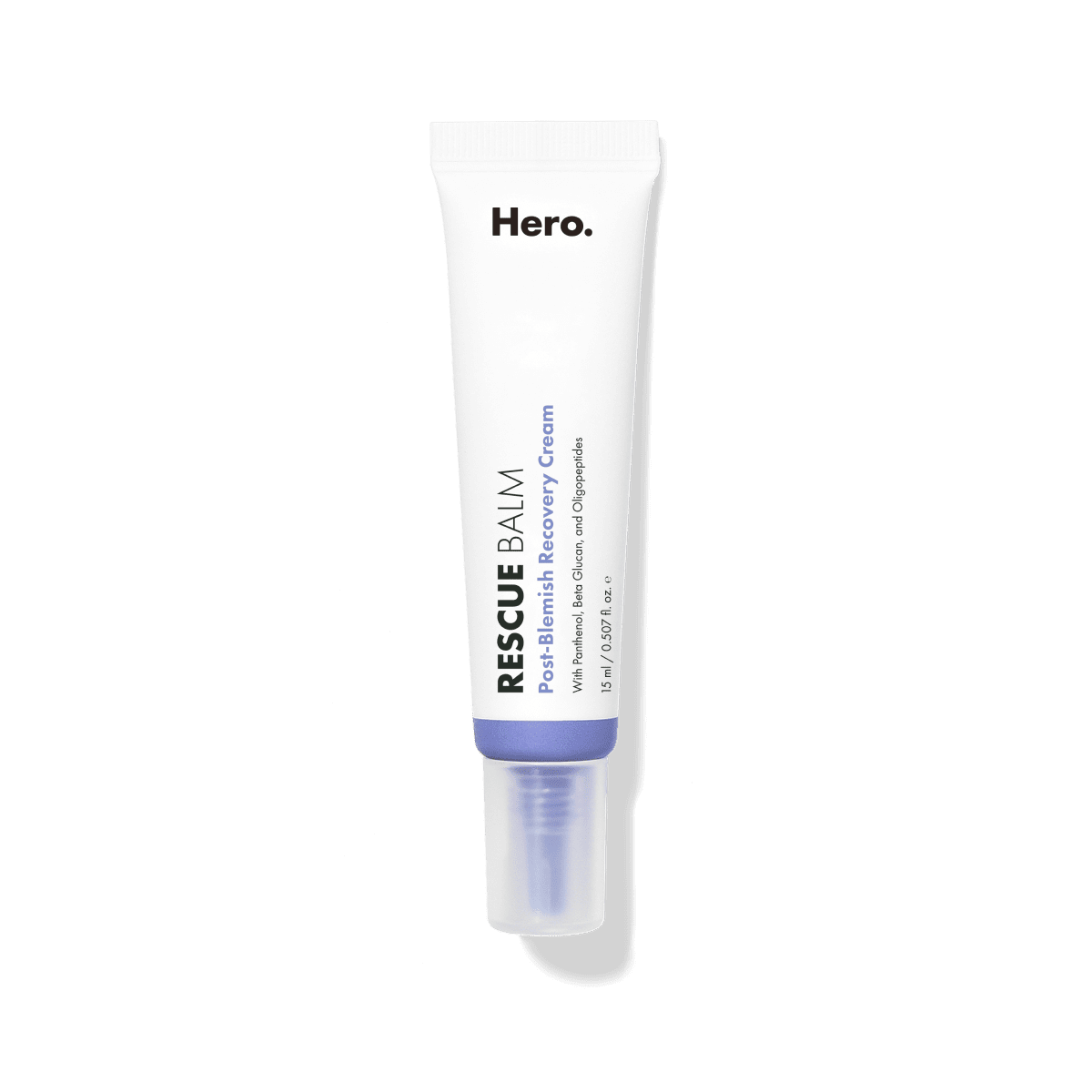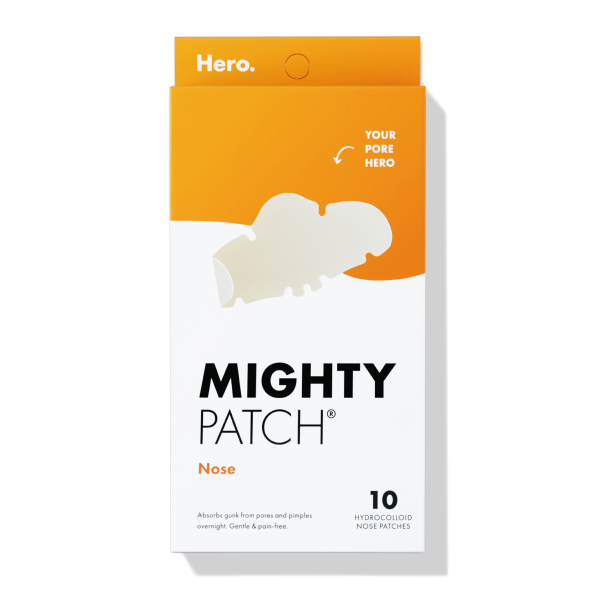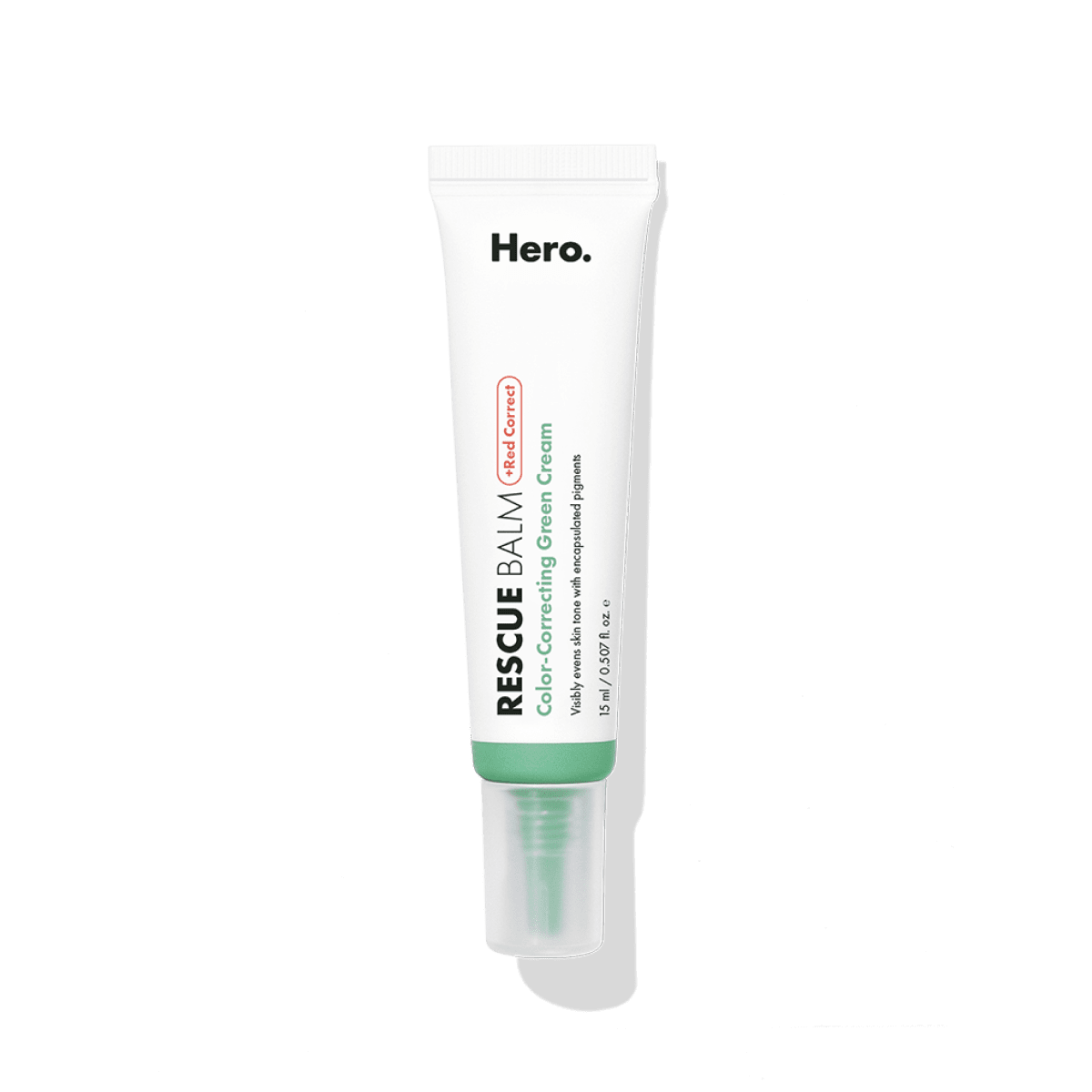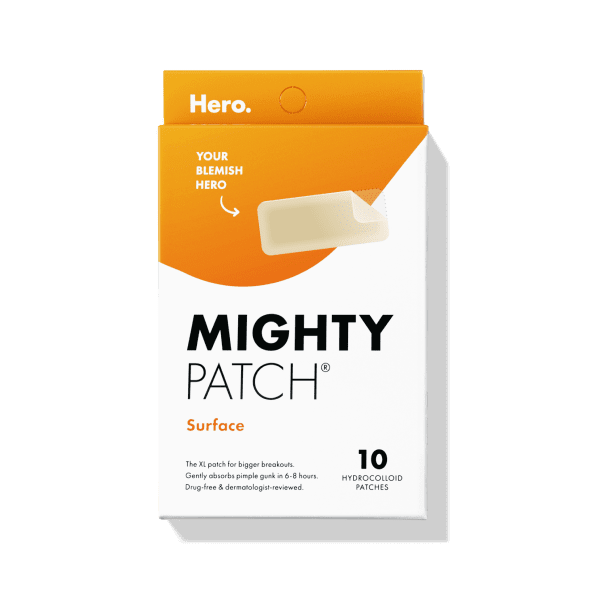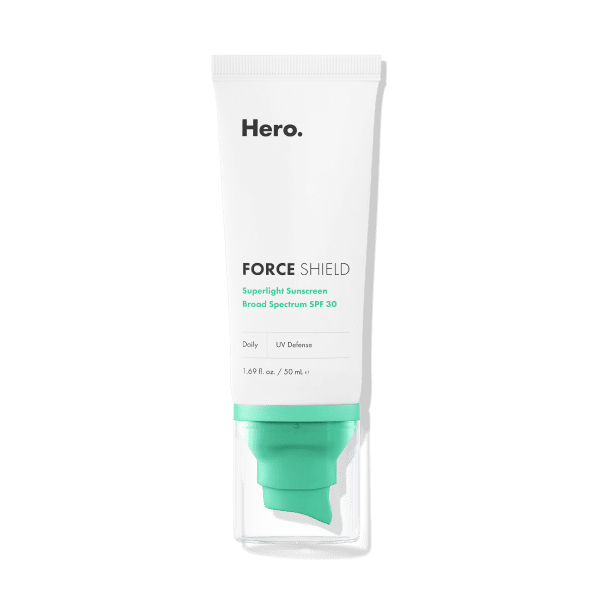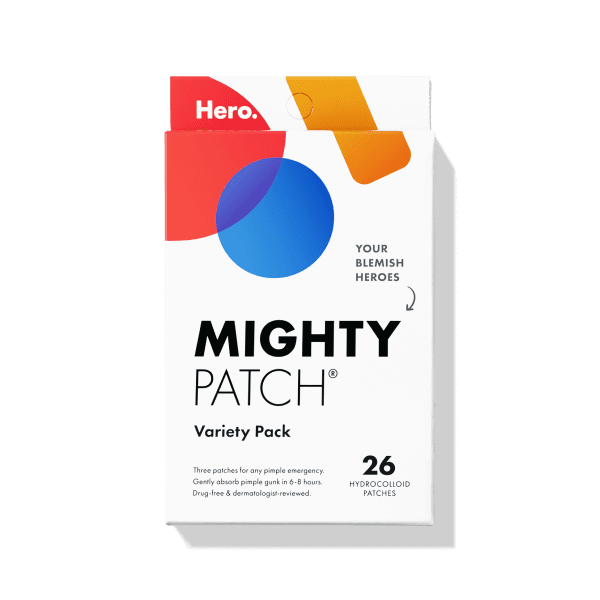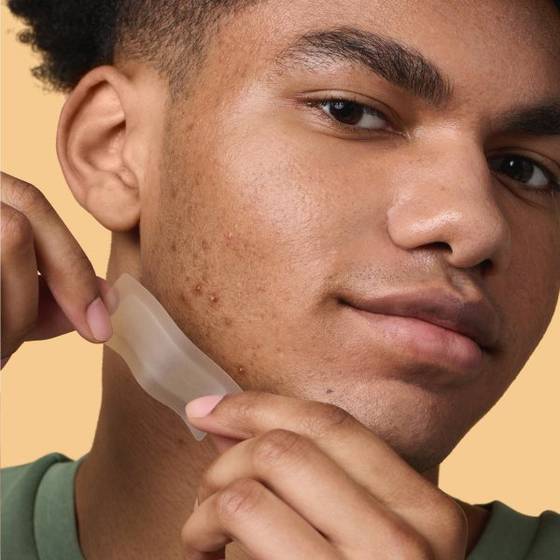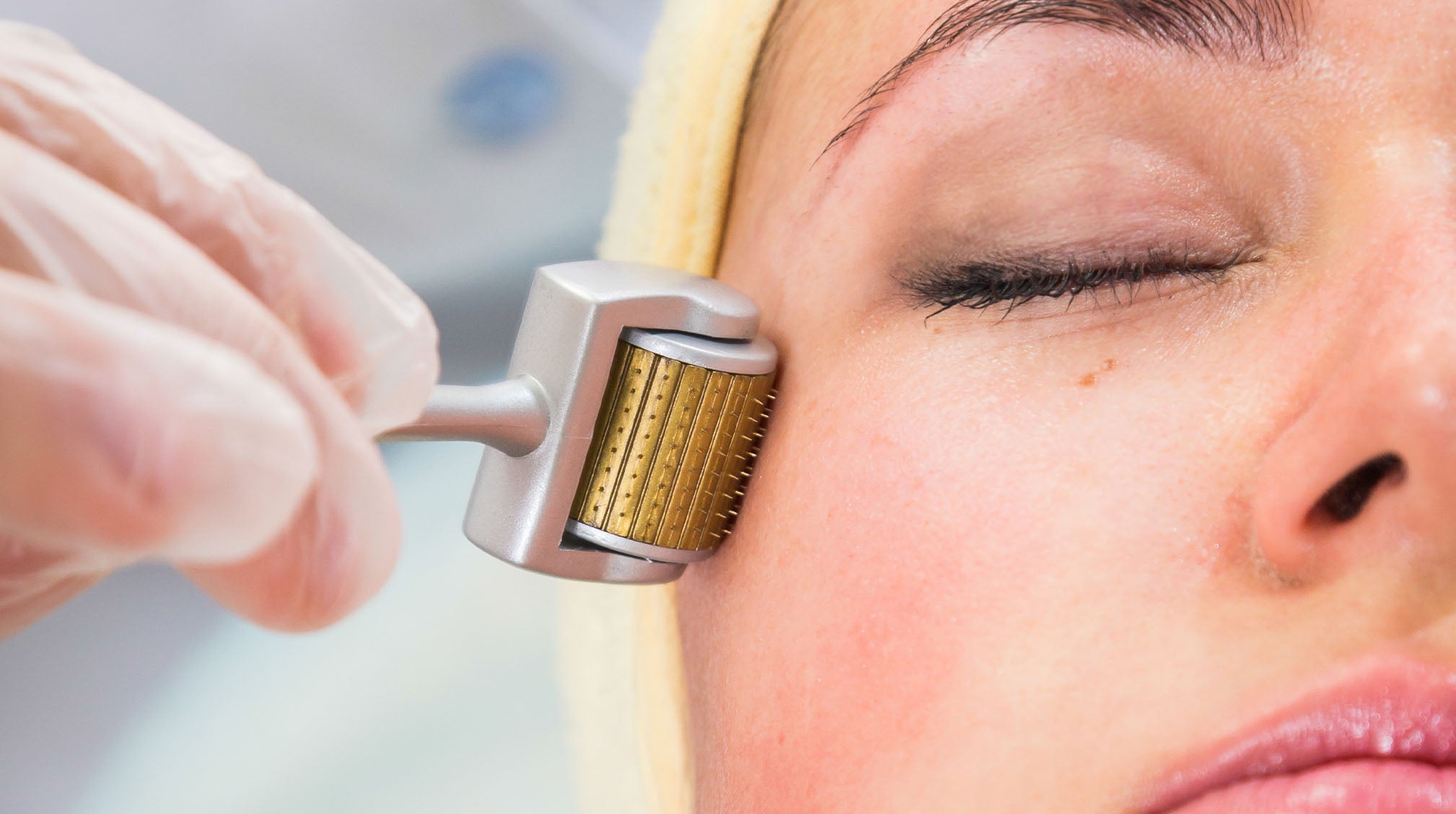
If you’ve ever suffered from acne, you know the drill: remove makeup, wash your face, exfoliate, put on a mask, wash that off, apply spot treatment … and a million other steps. And when you’re out shopping for skincare products, you probably scan ingredient lists in search of benzoyl peroxide, tea tree, and salicylic acid.
Not only are those ingredients rough on your skin, but topical treatments can only help to clear the outer layers of skin. That’s why many women are turning to microneedling (aka Collagen Induced Therapy). While topical products can only touch the skin’s surface, microneedling rollers have teeny tiny needles that prick the skin in order to stimulate healing and regeneration.
How it works
Sound a bit scary? Yup, we totally agree. After all, microneedling does punch tiny holes in the skin. But results have shown that microneedling works, which is why many women are willing to endure a teensy bit of pain for the reward of clear skin.
Dermatologists use an automated microneedling device -- which looks like one of those fat pens your grandpa likes to write with, but with tiny needles. It slowly glides across the face while the needles automatically move up and down, puncturing the skin’s surface.
It may sound crazy, but hurting your skin can actually help your skin. And when we say hurt, we only mean the skin–you won’t feel any pain. As we age, our body’s collagen breaks down faster, so we need more collagen to maintain the skin’s barrier.

Microneedling causes minimal damage to the skin, and the body’s immune system will automatically renew the surface by increasing cell turnover and releasing proteins, such as collagen and elastin. These proteins provide structural support and keep skin looking youthful and healthy, which is why microneedling is great for eliminating fine lines. The release of collagen also forces skin to accelerate the recovery period for healing or fading acne scars. However, microneedling is not recommended for active pimples.
Microneedling specs
Microneedling is a minimally invasive procedure, so there’s no need to worry that you’ll leave the dermatologist’s office looking like Carrie at the prom. Needle sizes range from 0.2 mm to 3.0 mm in length. Most people start with 0.5-1.0 mm if their skin is tougher and 0.2-0.25 mm if their skin is paper thin or sensitive. The amount of time to see results varies greatly depending on the thickness of the skin.
The average cost of microneedling at the dermatologist can cost anywhere between $100 and $700 per session and most people see results within four to six treatments.
How deep into the skin do microneedles have to penetrate before results show?
We asked our favorite dermatologist, Dr. Sarkar from Brookline Dermatology, to share her expertise. Sarkar believes that the needles should reach the dermis layer for the best results. Penetrating only the epidermis (the outer layer) will show no results. For most people, 1.0mm needles are needed to get to the dermis.

Hayes Valley Medical & Esthetics
Microneedling vs. similar treatments
Laser skin resurfacing
Studies have shown that nonablative laser treatments are safe and effective in treating acne scars. But when tested against new technology, such as microneedling, laser patients are more likely to experience post-inflammatory hyperpigmentation. A recent study found that subjects treated with microneedling did not experience any post-inflammatory hyperpigmentation.
Microdermabrasion
An oldie but goodie, microdermabrasion has been a skincare favorite for almost three decades for its ability to deliver smoother, softer skin. It works by exfoliating the skin’s surface with ablative material, such as sodium bicarbonate crystals, to gently scrub off dead skin cells without causing discomfort. Microneedling reaches deeper into the skin to stimulate new skin cells, allowing skin to regenerate on its own.
Dermarollers
Sometimes referred to as at-home microneedling, dermarollers were actually the first generation of microneedling tools. When compared to dermatologist microneedling, at-home dermarolling does not reach as deep and can cause more damage to the skin. Due to the rounded nature of the tool, the needles are most likely not going to puncture the dermis at the right angle, limiting the possible results and potentially causing tears in the skin.
At the dermatologist, microneedling is minimally invasive and keeps the skin partially intact, limiting infections and hyperpigmentation. At-home dermarollers require users to follow specific instructions to prep and clean the tool and the skin.
Microneedle patches
The latest microneedle product to hit the market, these pimple patches use hyaluronic acid (instead of actual needles) to puncture the skin so the other patch ingredients can reach deeper. The patches treat zits and inflamed pimples with salicylic acid and tea tree leaf oil.
When compared to microneedling, patches will not have the same effect. Because they don't reach as deep as professional microneedling treatments, they won't induce the same amount of collagen production. However, these patches are great for allowing other acne-fighting ingredients to seep past just the surface of the skin!
Why stick with a professional?
Microneedling at the dermatologist is clearly the way to go. Patients receive a numbing cream so the process will be painless even with longer needles. Skin is prepped and punctured by a professional. Needles are new, super thin and disposable, so there’s no need to worry about rusty or dirty needles.
As a dermatologist, Sarkar shares, “it’s easy for me to shift my body around the patient to pull the skin taut and puncture at a 90 degree angle. If the skin is not pulled taut or it’s not at the right angle, you won’t puncture the skin accurately for the best results."
Plus, dermatologists are able to use a variety of needle sizes for different surfaces of the face. They will typically use thinner needles for the thin, sensitive skin around the eyes and thicker needles for the cheek or neck area - even 3.0mm to ensure deep penetration!
Should you try it?
At Hero Cosmetics, we’re all for new, innovative technology. Based on the results we’ve seen from users who have greatly improved their skin texture and hyperpigmentation, we’re totally down to give it a go. The great thing about microneedling is that it’s customizable and safe for all skin types. Whether your skin is sensitive or normal, thick or thin, there’s a needle that will deliver results for your skin.
What do you guys think? Would you try (or have you tried) microneedling? Share here!

